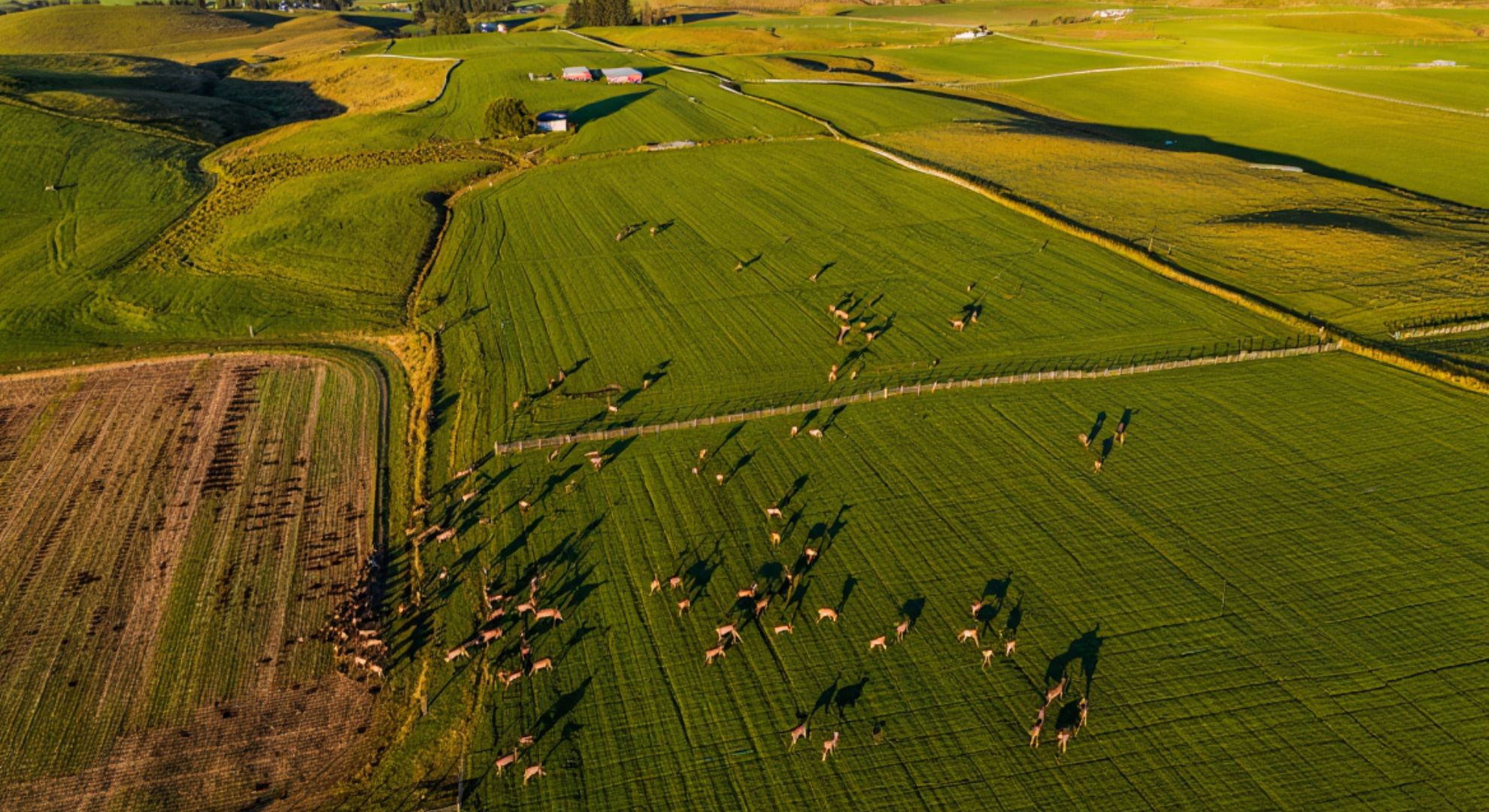Before sunrise on a frosty morning, the paddocks look quiet. Then the light comes up, and the hoofprints appear like confetti. Across Otago, landowners are counting losses in grain, kale and new pasture, and the tally is rising almost as quickly as the herds themselves.
Hunters, ecologists and farmers agree on one point: numbers of feral deer are surging. The debate now is what to do, how fast, and who pays.
A boom written in hoofprints
Ask around Clyde, Balclutha or the Strath Taieri and you’ll hear the same story: deer that used to keep to the bush edge are browsing in broad daylight. Some paddocks look as if a mower’s been dragged across them overnight.
“Last year I saw fours and fives,” said one Waitaki grower. “This winter I’m counting dozens on a single pivot.” Another farmer put it bluntly: “We’re planting for the herd first, the stock second.”
Anecdote lines up with trend. Mild winters and long dry spells have lifted survival, while regenerating scrub and unharvested shelter belts give cover. Reduced commercial recovery in some valleys after Covid-era market shocks left animals on the hill. All the ingredients for expansion are in the mix.
Farmers on the front line
For mixed arable operators, the damage piles up in small, relentless ways. Seedlings nipped off. Fence lines pushed. Water races muddied. The cost isn’t just the crop; it’s the lost time.
“You can’t schedule around deer,” one arable farmer said. “They don’t read the calendar. You do the prep, you line up the drill, and then you’re patching bare strips for a week.”
Some have tried night shooting. Others have brought in contractors for ground culling. A few have invested in taller, tighter fencing around high-value blocks. Every option carries a bill.
Ecologists warn of cascading effects
Beyond the farm gate, the ecology tells its own story. Heavy browsing suppresses native seedlings, flattens tussock, and opens space for weeds to jump. Streams feel the pressure where riparian plants are stripped.
“Once deer shift from fringe browsers to paddock regulars, you see landscape-level change,” said a central Otago ecologist. “Recovery takes years; prevention takes weeks if you act early.”
That timing matters. Populations that double every few seasons can outpace control budgets in a blink.
Why numbers are rising
- Warmer winters and fewer hard frosts boost fawn survival.
- More edge habitat from scrub regrowth and forestry mosaics.
- Patchy hunting pressure and reduced commercial recovery in some ranges.
- Crops and irrigated pasture creating reliable, nutrient-rich feed.
What’s being tried — and what it costs
Local efforts mix private action and public programmes, with varying success. Here’s how common tools compare right now:
| Method | Effectiveness (short-term) | Cost to farmer | Speed of impact | Key risks/limits |
|---|---|---|---|---|
| Ground culling | High on accessible blocks | Moderate | Fast | Labour/time; evasive survivors |
| Helicopter culls | Very high across terrain | High (shared) | Very fast | Expensive; needs coordination |
| Night shooting | Medium to high | Low to moderate | Fast | Safety, permits, neighbour issues |
| Tall deer fencing | Very high (where installed) | Very high | Immediate | Capital-heavy, maintenance |
| Commercial recovery | Medium | Often neutral | Medium | Market swings, access constraints |
| Habitat modification | Medium (long-term) | Moderate | Slow | May conflict with other goals |
Some councils and catchment groups are co-funding aerial culls in hotspots. Where neighbours coordinate, results are measurably better. Where efforts are piecemeal, animals simply shift to the next gully and return after a week.
The politics of a moving target
Management sits at a tricky intersection. Recreational hunters value access and healthy herds. Farmers want fewer mouths on the flats. Conservation agencies aim to protect native habitats. Iwi and community groups hold different priorities again, from mahinga kai to biodiversity.
“We can live with deer,” said one Maniototo hunter, “but not at this density.” A Balclutha landowner, meanwhile, wants clear thresholds: “Give us a number—X animals per square kilometre—and a plan to hold it.”
Setting that number is contentious. It varies by land type, crop mix, and the presence of native remnants. What remains constant is the need for monitoring that isn’t guesswork.
Data before bullets
Trail cameras, thermal drones and simple night counts along fixed transects are changing the conversation. When a block has baseline numbers, landowners can target culls to seasons and hotspots. Costs drop, outcomes rise.
One catchment group reported fewer shots, better results, after mapping nightly “commuter routes” from gullies to pivots. “We stopped chasing ghosts,” a coordinator said. “We started removing the right animals at the right times.”
Pair that with agreed reporting—animals taken, paddocks protected, browse indices—and the fog clears.
What success could look like
Success is not zero deer everywhere. It’s a stable, low-density population that avoids high-value paddocks and stays out of sensitive native areas. It’s coordinated action over fashionable action. It’s budgets that prioritise prevention in spring rather than emergency response in August.
Most of all, it’s a compact among neighbours. Deer don’t read fencelines. Control that stops at a boundary wastes money. Control that crosses the road, the river and the ridgeline pays back.
The hoofprints on a cold morning will never vanish in Otago. But they can be fewer, farther between, and kept where they do the least harm. That outcome is still within reach—if the region moves fast enough to meet a fast-moving herd.
